Compatibility
There’s a saying that goes something like “Ask three beekeepers an opinion on … and you’ll get five answers”. And if it isn’t a saying, then it should be. Have a look at the online forums and you’ll see numerous threads with multiple – often wildly contradictory – answers. This can be a problem for experienced beekeepers and is a total nightmare for new beekeepers.
Inevitably, beekeeping is an inexact science. There are too many variables to be dogmatic about things – the weather, colony strength, available forage, parasite levels, time, beekeeping ability etc†.
Compatibility, standardisation and efficiency
However, one thing that most beekeepers should agree on is that compatibility of equipment is important. For efficiency, your equipment needs to be compatible e.g. using a roof that fits any of your hives. Without compatibility you will inevitably experience the frustration of trying to make incompatible equipment ‘fit’ together, or have to make repeated trips to the apiary with the correct kit.
Been there, done that 🙁
Compatibility is best achieved by standardisation i.e. all hives are of the same size and design, built to an agreed specification or standard, ideally by a single manufacturer. I suggest ‘single manufacturer’ as some don’t adhere to the standards as closely as others. Unless you are, and intend to stay, a single hive owner (and there are very good reasons why you shouldn’t) this is an ideal that is rarely achieved.
If you have more than one apiary you’re likely to be moving hives between them. Again, compatibility is important. Finally, if you are being mentored, acting as a mentor to others or intending to sell nucleus colonies, it helps if your hive equipment is compatible with others.
This compatibility starts with the frame size – and therefore defines the brood/super dimensions – and the frame spacing (e.g. Hoffman/Manley), but extends to whether the hives are bottom or top bee space, the types of floors, entrance blocks, clearer boards, split or division boards, feeders etc.
Which hive?
We’re spoilt for choice in the UK … literally.
Compare the hive types sold by some of the largest suppliers of beekeeping equipment in the UK and USA e.g. Thorne’s and Dadant. Thorne’s list about eight removable-frame hives (National, WBC, Langstroth, Commercial, Dadant, Smith, Rose and Dartington). Dadant list just one (Langstroth, albeit in 8 or 10 frame widths). I know that some hives use the same frame sizes∏, but have also simplified things by ignoring the range of frame depths offered – 14×12’s, shallows, mediums, deeps etc. In this post I’m only really concerned with box compatibility.
No wonder many starting beekeeping ask “Which hive should I buy?”. They’re probably advised to get whatever is in use locally, often Nationals, but increasingly Langstroths in some places or Smiths in parts of Scotland. The recommendation to start with whatever is used locally is both logical and pragmatic. The beginner is likely to have to source a nucleus colony to start with and (hopefully) this will have been purchased locally, from a more experienced beekeeper (their mentor?) with gentle bees of known provenance, adapted to the local climate and inspected before purchase‡.
In the overall scheme of things I don’t think the choice of hive type is particularly important. None are inherently better than others, though a few are perhaps worse. The bees, Apis mellifera, are the same and certainly don’t care. Far more important is that the equipment acquired is compatible – with what is already owned, with what might be purchased, built or inherited in the future, and with what others use.
Running out of kit
A universal truth about beekeeping is that, sooner or later, you’ll run out of equipment. For beginners it’s during their first swarm season when they suddenly find they need a complete additional hive to undertake the classic Pagden ‘artificial swarm’ method. Alternatively, or perhaps simultaneously, they capture a swarm and have to house that. It’s not unusual for all this to happen in the same week of the same month of the first year of beekeeping.
It can be a little chaotic 🙂
There are two or three obvious ways to reduce the equipment crisis. Firstly, use a version of the vertical split rather than a Pagden artificial swarm, thereby reducing the need for an additional floor and roof for starters. Secondly, bodge a solution … use stacked supers as a makeshift broodbox, build roofs out of Correx (abandoned For Sale signs should always be repurposed) or use an upturned plant tray or piece of polythene-covered plywood. Finally, borrow suitable kit from a friendly local beekeeper … which brings us back to compatibility again.
Don’t for a moment think that a dozen colonies and a decade’s experience stops a beekeeper running out of equipment. A couple of years ago we had a bumper summer and I ran out of supers. Most colonies had 2-3 supers on already and there seemed to be no end in sight to the nectar flow. It was fantastic. A generous friend loaned me a dozen supers to buy me enough time to remove the first fully capped supers, extract the honey and recycle the boxes. Without this act of generosity – only possible as my friend was downsizing – my hives would have become packed with nectar and the colonies might have swarmed.
Mix’n’match
It’s at these times that equipment compatibility becomes paramount. I could borrow and use those supers as my friend also ran Nationals. The beginner can of course borrow any type of kit, but if the artificially swarmed colony needs to subsequently be united with the original box then it’s much easier if the equipment is compatible (note the thin shim in use in the picture below, between the incompatible poly boxes on top and standard cedars). As it turned out, the supers I borrowed weren’t 100% compatible as my friend used top bee space whereas mine were bottom bee space … the bees and I coped.
This need to mix’n’match equipment happens every season. You might want to move frames about to boost particular colonies, to mix frames removed from several strong colonies to make up nucs for overwintering, to unite nucleus colonies after using the newly mated queen from one of them, or merge two very uneven strength colonies for overwintering. It even happens when trying to efficiently ‘use up’ two- or three-frame nucs used for queen mating at the end of the season – it’s far easier to simply drop these into full-size hives than do the same thing with brood and bees from mini-nucs.
Not only the big box items
Equipment standardisation and compatibility also extends to things other than frames and boxes. There’s a host of other items where it’s beneficial to have one type only, and for that type to be compatible with your other equipment. Floors are a good example; if they’re all made to the same design and dimensions then the removable Correx Varroa trays, the entrance reducers and the travel screens/entrance blocks are perfectly interchangeable. Both crownboards and roofs should also be broadly standardised and compatible. For example, all my colonies have year-round insulation in the crownboard and all the roofs are uninsulated. I previously had some insulated roofs and some uninsulated crownboards. Inevitably, moving or uniting hives resulted in the odd colony lacking insulation altogether. D’oh!
- Varroa tray …
- The dreaded overhang …
- Correx in the frost …
Pragmatic rationalisation
I’ve slowly achieved a reasonable level of standardisation and compatibility across my apiaries. I’m hoping that this will be improved further in 2017. After using a range of hives – purchased, borrowed and homemade, I’m settling on:
- Standard depth, bottom bee space, Nationals in cedar or poly but – critically – these boxes must be interchangeable. To this end I’m using standard cedar broods and supers, or Swienty poly equivalents. These have the same external dimensions (18″/46cm), so can be stacked as required, and the interface between boxes is completely flat.
- Just two floor designs. One has a fully sealed Varroa tray – built by Pete Little – and is used exclusively in the bee shed. The entrance reducer is fitted permanently to these floors. The second type are the so-called ‘kewl’ floors with a Dartington-inspired underfloor entrance. All my kewl floors are homemade. Despite this (and my amateur DIY skills), they take the same size Correx Varroa tray, all have holes drilled in the correct places to a) attach luggage scales for winter ‘hefting’, and b) deliver vaporised miticides. In addition, all take the same size and design entrance block for transport or other operations when the entrance needs to be sealed (vaporisation, vertical splits or Bailey comb changes).
- Roofs are all uninsulated, interchangeable and either standard wood/metal or simple sheets of folded Correx. They serve no other purpose than weatherporoofing. I gave away all my insulated roofs when I moved North.
- All crownboards are insulated, either with inbuilt Kingspan blocks or by the addition of an 18″ square block on top. None have feeder holes. Almost all are reversible and I’ve got ekes to achieve the same separation when I need space to feed fondant.
- All nucleus hives are Thorne’s Everynucs. This design has a removable floor, so two bodies can be stacked for uniting.
But … if I were to start again from scratch I’d probably use Langstroths. I use Nationals because I’ve invested in Nationals, not because I think they’re inherently better.
Exceptions to the rule
Or compromises …
- All of my bait hives are MB/Paradise poly Nationals (or stacked supers from the same manufacturer). All have simple Correx floors and roofs, or those supplied at purchase. Almost none of these items – floors, boxes or roofs – are readily compatible with production hives. This poly hive design has an infuriating lip/overhang that makes them incompatible with standard National equipment (see images above). Bait hives tend to get lugged about a bit more than production hives so their low weight is a bonus. My continued use of these hives is a perfect example of meanness and generosity … I’m too mean to get rid of them and I’m too generous to palm them off on an unsuspecting beginner.
- My Everynucs are not directly (i.e. box to box) compatible with National hives though of course the frames are. I therefore can’t stack nucs onto standard brood boxes – for uniting, for overwintering or for certain types of queen rearing operations. This is a compromise I have to make due to a) the finances and time I have invested in these poly nucs, and b) their overall benefits and quality, both of which I remain convinced about. I have a few lovely cedar nuc boxes built by Pete Little that can be used for the queenright queen rearing method developed by Steve Rose if needed.
- I have a few Paynes 8-frame nuc boxes used solely to capture swarms (or for dire emergencies). These are lightweight boxes with flimsy lids and no removable floor … ideal for use in one hand at the top of a ladder.
Outstanding improvements to compatibility
Outstanding as in ‘not yet achieved’ that is. Sorry if you were expecting some brilliant insights here 😉 Regular readers are unlikely to have been mislead.
The entrance holes through the bee shed wall are of two sizes and the larger ones will be replaced (reduced) at some point. When I first built them I overestimated the size needed. The oversized entrances are too big for a weak colony to defend and the different sizes means I need two types of foam entrance blocks when vaporising.
Secondly, I have to decide on a standard way to block/reduce the entrance of the poly Everynucs. I’ve previously used a hotchpotch collection of wire mesh, foam or wooden blocks. The entrance on these nucs is ridiculously large and I’ve been dabbling with a few simple designs over the winter. I need a simple and inexpensive ‘fix’ as I have a lot of these boxes … as usual, Correx is my friend!
Finally, I’ve recently purchased a stack of Abelo poly hives for work and will be interested to see how these perform this season. These boxes are ‘Nationals’, but ever so slightly different from the Swienty and cedar boxes. However, the dimensions and interfaces of broods and supers are definitely compatible, so they should mix’n’match OK. This purchase was a perfect example of how beekeepers end up with a wide range of different gear … they are supplied ready-painted, so save time, and they were cheap as chips in the Abelo sale 😉
† Of course, the widely divergent views expressed on some of the discussions forums simply reflects a bad case of midwinter cabin fever and the contrariness of some contributors.
∏ And irritatingly, some take the same frame sizes, but with either short or long lugs. Grrr.
‡ And if you are a beginner reading this I would encourage you to read a couple of previous posts on mentoring and the benefits of buying local bees.
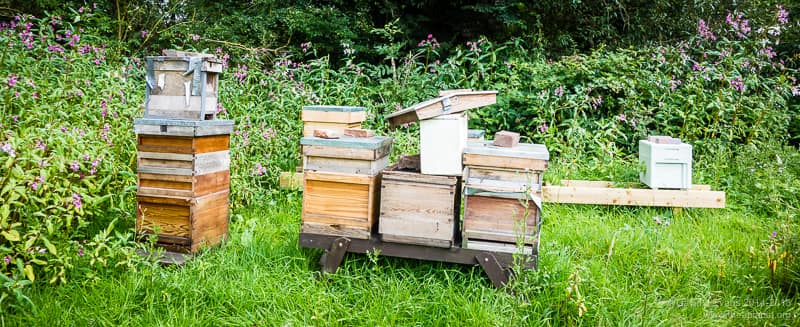
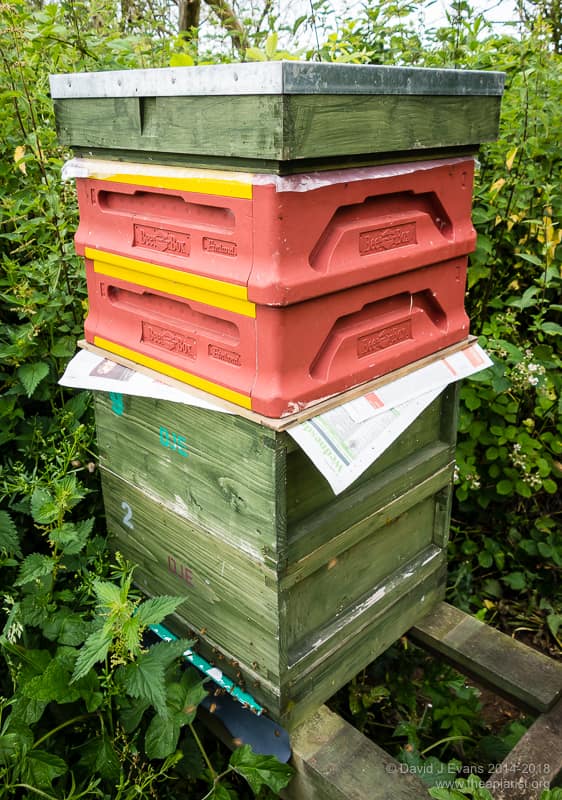
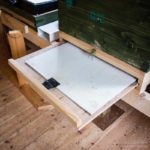
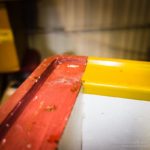
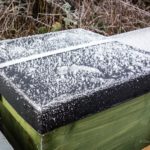
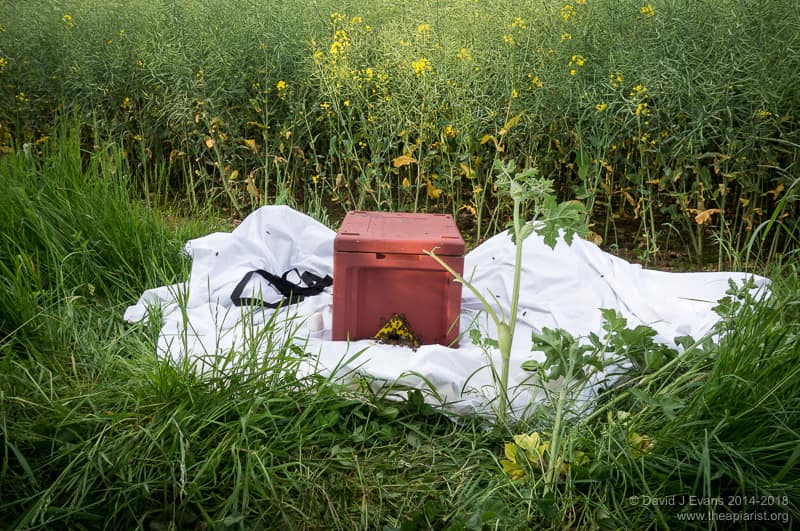
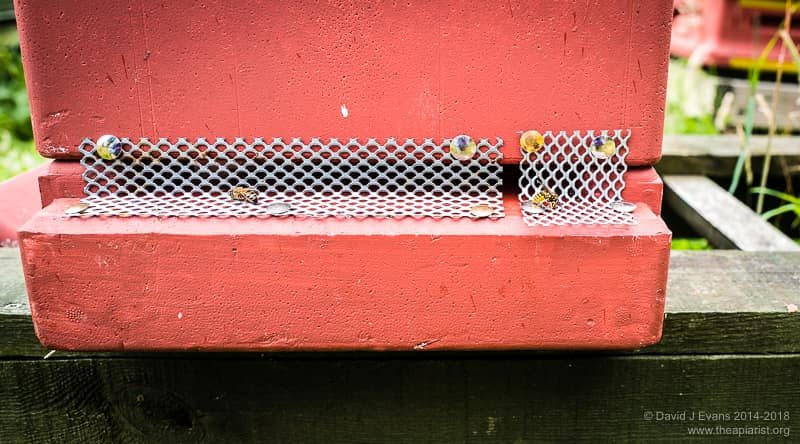
Join the discussion ...